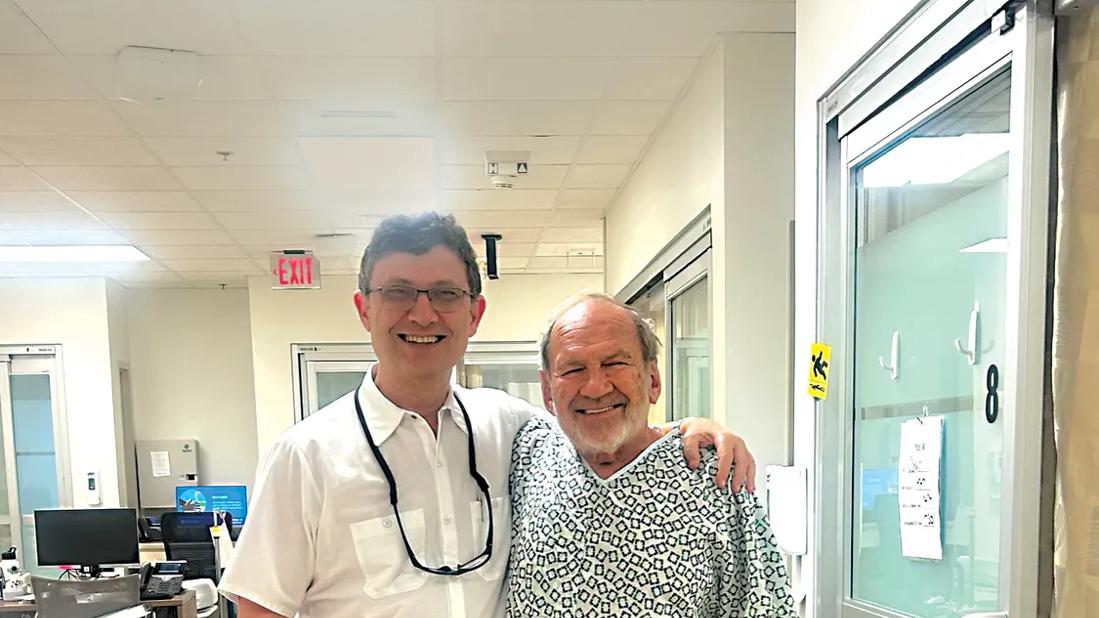
Note: This article is reprinted from Cardiac Care: An Update for Physicians from the Heart, Vascular and Thoracic Institute (Spring 2024)
Advertisement
Cleveland Clinic is a non-profit academic medical center. Advertising on our site helps support our mission. We do not endorse non-Cleveland Clinic products or services. Policy
Transcatheter aortic valve replacement (TAVR), a minimally invasive procedure for severe aortic stenosis, has traditionally involved a hospital stay for post-procedural monitoring. However, advances in technique have enabled a paradigm shift towards same-day discharge, offering an opportunity for patients to enjoy an expedited recovery in the familiar comforts of home.
Cleveland Clinic in Florida is committed to innovation in cardiac care including embracing same-day discharge protocols for eligible TAVR patients, which offers several notable benefits to both patients
and healthcare systems. Patients experience reduced exposure to hospital-acquired infections and enjoy a faster return to their routine activities. This approach also optimizes hospital resources, allowing for efficient utilization of beds and a smoother patient flow within the healthcare system.
The feasibility of same-day discharge relies mostly on procedural factors, as neither patient age nor the Society of Thoracic Surgeons (STS) risk score are predictors of readmission. Results of the multicenter PROTECT TAVR study in 2022 showed a 2.8% rate of 30-day cardiovascular readmission among 124 patients selected for same-day discharge after TAVR. The mean age of the patients was 78 years and median STS score was 2.4%.
Procedural factors include a minimalist approach under moderate sedation, primary percutaneous femoral access, secondary transradial access, completion of a femoral angiogram to confirm hemostasis, and absence of complications.
Advertisement
Post-procedural care includes a 6-hour observation period with telemetry monitoring for delayed rhythm disturbances, hemodynamic stability, and comfortable ambulation. Patients with new (such as left bundle branch block) or pre-existing conduction deficits require longer observation. Transthoracic echocardiography is performed before discharge.
The results of an additional study confirmed that when the above-mentioned procedural factors and post-procedural care were in place, same-day discharge after TAVR was feasible without risk to patient safety post-discharge.
Our multidisciplinary team, comprising experienced interventional cardiologists, cardiac surgeons, anesthesiologists, and specialized nursing staff, meticulously evaluates each patient to ensure suitability for same-day discharge, considering additional factors such as social support and proximity to a medical center, should a problem arise. Patients discharged on the same day are provided a direct phone number for questions and are expected to return for a follow-up visit that includes electrocardiogram within 24 to 48 hours.
As part of our ongoing commitment to optimizing patient care, Cleveland Clinic in Florida remains dedicated to advancing patient management strategies. Our relentless pursuit of excellence, coupled with a patient-centric approach, continues to shape the future of cardiovascular care, allowing us to offer innovative solutions like same-day discharge after structural interventions to enhance patient outcomes and experiences.
Advertisement
Dr. Cohen is Director of Structural Heart Interventions at Cleveland Clinic Weston Hospital.
Advertisement
Advertisement

Cleveland Clinic Weston Hospital’s collaborative model elevates care for complex lung diseases

Interventional pulmonologists at Cleveland Clinic Indian River Hospital use robotic technology to reach small peripheral lung nodules

Trained in the use of multiple focal therapies for prostate cancer, Dr. Jamil Syed recommends HIFU for certain patients with intermediate-risk prostate cancer, especially individuals with small, well-defined tumors localized to the lateral and posterior regions of the gland.

Cleveland Clinic Weston Hospital is actively recruiting patients for an international, multicenter, phase III study comparing MIS versus open interval cytoreduction following neoadjuvant chemotherapy in patients with stage IIIC-IV epithelial ovarian cancer.

Urologic oncologist with Cleveland Clinic in Florida performs robotic-assisted retroperitoneal lymph node dissection.

Cleveland Clinic researchers in Florida identify unexpected survival benefit

Noninvasive, radiation-free imaging supports treat-to-target IBD care

Cleveland Clinic in Florida transplant specialists perform advanced surgical approach for living kidney donation